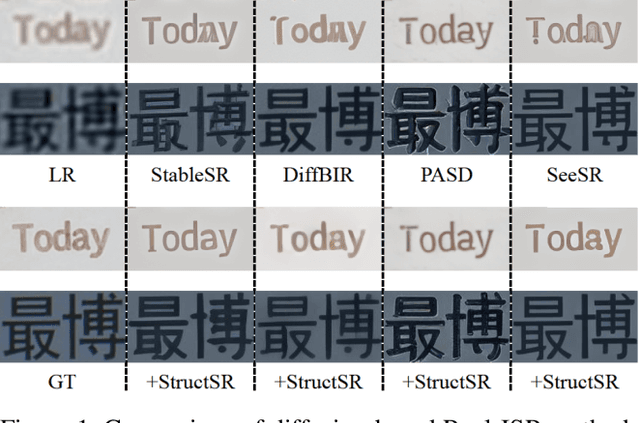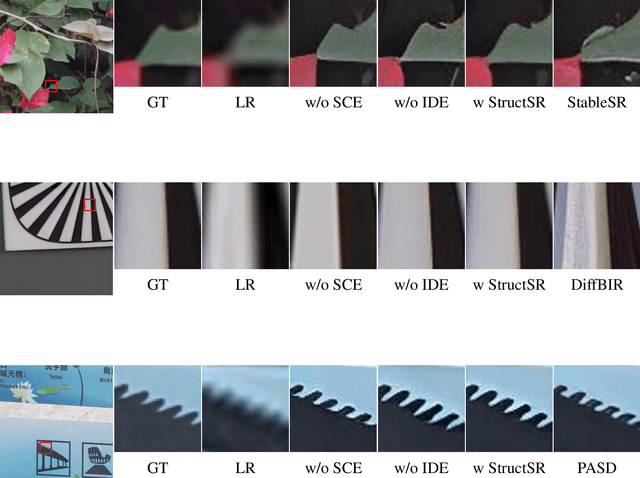Sheng-Jun Huang
Tailored Teaching with Balanced Difficulty: Elevating Reasoning in Multimodal Chain-of-Thought via Prompt Curriculum
Aug 26, 2025Abstract:The effectiveness of Multimodal Chain-of-Thought (MCoT) prompting is often limited by the use of randomly or manually selected examples. These examples fail to account for both model-specific knowledge distributions and the intrinsic complexity of the tasks, resulting in suboptimal and unstable model performance. To address this, we propose a novel framework inspired by the pedagogical principle of "tailored teaching with balanced difficulty". We reframe prompt selection as a prompt curriculum design problem: constructing a well ordered set of training examples that align with the model's current capabilities. Our approach integrates two complementary signals: (1) model-perceived difficulty, quantified through prediction disagreement in an active learning setup, capturing what the model itself finds challenging; and (2) intrinsic sample complexity, which measures the inherent difficulty of each question-image pair independently of any model. By jointly analyzing these signals, we develop a difficulty-balanced sampling strategy that ensures the selected prompt examples are diverse across both dimensions. Extensive experiments conducted on five challenging benchmarks and multiple popular Multimodal Large Language Models (MLLMs) demonstrate that our method yields substantial and consistent improvements and greatly reduces performance discrepancies caused by random sampling, providing a principled and robust approach for enhancing multimodal reasoning.
MultiMedEdit: A Scenario-Aware Benchmark for Evaluating Knowledge Editing in Medical VQA
Aug 09, 2025Abstract:Knowledge editing (KE) provides a scalable approach for updating factual knowledge in large language models without full retraining. While previous studies have demonstrated effectiveness in general domains and medical QA tasks, little attention has been paid to KE in multimodal medical scenarios. Unlike text-only settings, medical KE demands integrating updated knowledge with visual reasoning to support safe and interpretable clinical decisions. To address this gap, we propose MultiMedEdit, the first benchmark tailored to evaluating KE in clinical multimodal tasks. Our framework spans both understanding and reasoning task types, defines a three-dimensional metric suite (reliability, generality, and locality), and supports cross-paradigm comparisons across general and domain-specific models. We conduct extensive experiments under single-editing and lifelong-editing settings. Results suggest that current methods struggle with generalization and long-tail reasoning, particularly in complex clinical workflows. We further present an efficiency analysis (e.g., edit latency, memory footprint), revealing practical trade-offs in real-world deployment across KE paradigms. Overall, MultiMedEdit not only reveals the limitations of current approaches but also provides a solid foundation for developing clinically robust knowledge editing techniques in the future.
Efficient Code LLM Training via Distribution-Consistent and Diversity-Aware Data Selection
Jul 03, 2025Abstract:Recent advancements in large language models (LLMs) have significantly improved code generation and program comprehension, accelerating the evolution of software engineering. Current methods primarily enhance model performance by leveraging vast amounts of data, focusing on data quantity while often overlooking data quality, thereby reducing training efficiency. To address this, we introduce an approach that utilizes a parametric model for code data selection, aimed at improving both training efficiency and model performance. Our method optimizes the parametric model to ensure distribution consistency and diversity within the selected subset, guaranteeing high-quality data. Experimental results demonstrate that using only 10K samples, our method achieves gains of 2.4% (HumanEval) and 2.3% (MBPP) over 92K full-sampled baseline, outperforming other sampling approaches in both performance and efficiency. This underscores that our method effectively boosts model performance while significantly reducing computational costs.
Learning to Trust Bellman Updates: Selective State-Adaptive Regularization for Offline RL
May 26, 2025Abstract:Offline reinforcement learning (RL) aims to learn an effective policy from a static dataset. To alleviate extrapolation errors, existing studies often uniformly regularize the value function or policy updates across all states. However, due to substantial variations in data quality, the fixed regularization strength often leads to a dilemma: Weak regularization strength fails to address extrapolation errors and value overestimation, while strong regularization strength shifts policy learning toward behavior cloning, impeding potential performance enabled by Bellman updates. To address this issue, we propose the selective state-adaptive regularization method for offline RL. Specifically, we introduce state-adaptive regularization coefficients to trust state-level Bellman-driven results, while selectively applying regularization on high-quality actions, aiming to avoid performance degradation caused by tight constraints on low-quality actions. By establishing a connection between the representative value regularization method, CQL, and explicit policy constraint methods, we effectively extend selective state-adaptive regularization to these two mainstream offline RL approaches. Extensive experiments demonstrate that the proposed method significantly outperforms the state-of-the-art approaches in both offline and offline-to-online settings on the D4RL benchmark.
Data-efficient LLM Fine-tuning for Code Generation
Apr 17, 2025Abstract:Large language models (LLMs) have demonstrated significant potential in code generation tasks. However, there remains a performance gap between open-source and closed-source models. To address this gap, existing approaches typically generate large amounts of synthetic data for fine-tuning, which often leads to inefficient training. In this work, we propose a data selection strategy in order to improve the effectiveness and efficiency of training for code-based LLMs. By prioritizing data complexity and ensuring that the sampled subset aligns with the distribution of the original dataset, our sampling strategy effectively selects high-quality data. Additionally, we optimize the tokenization process through a "dynamic pack" technique, which minimizes padding tokens and reduces computational resource consumption. Experimental results show that when training on 40% of the OSS-Instruct dataset, the DeepSeek-Coder-Base-6.7B model achieves an average performance of 66.9%, surpassing the 66.1% performance with the full dataset. Moreover, training time is reduced from 47 minutes to 34 minutes, and the peak GPU memory decreases from 61.47 GB to 42.72 GB during a single epoch. Similar improvements are observed with the CodeLlama-Python-7B model on the Evol-Instruct dataset. By optimizing both data selection and tokenization, our approach not only improves model performance but also improves training efficiency.
Rethinking Epistemic and Aleatoric Uncertainty for Active Open-Set Annotation: An Energy-Based Approach
Feb 27, 2025



Abstract:Active learning (AL), which iteratively queries the most informative examples from a large pool of unlabeled candidates for model training, faces significant challenges in the presence of open-set classes. Existing methods either prioritize query examples likely to belong to known classes, indicating low epistemic uncertainty (EU), or focus on querying those with highly uncertain predictions, reflecting high aleatoric uncertainty (AU). However, they both yield suboptimal performance, as low EU corresponds to limited useful information, and closed-set AU metrics for unknown class examples are less meaningful. In this paper, we propose an Energy-based Active Open-set Annotation (EAOA) framework, which effectively integrates EU and AU to achieve superior performance. EAOA features a $(C+1)$-class detector and a target classifier, incorporating an energy-based EU measure and a margin-based energy loss designed for the detector, alongside an energy-based AU measure for the target classifier. Another crucial component is the target-driven adaptive sampling strategy. It first forms a smaller candidate set with low EU scores to ensure closed-set properties, making AU metrics meaningful. Subsequently, examples with high AU scores are queried to form the final query set, with the candidate set size adjusted adaptively. Extensive experiments show that EAOA achieves state-of-the-art performance while maintaining high query precision and low training overhead. The code is available at https://github.com/chenchenzong/EAOA.
StructSR: Refuse Spurious Details in Real-World Image Super-Resolution
Jan 16, 2025



Abstract:Diffusion-based models have shown great promise in real-world image super-resolution (Real-ISR), but often generate content with structural errors and spurious texture details due to the empirical priors and illusions of these models. To address this issue, we introduce StructSR, a simple, effective, and plug-and-play method that enhances structural fidelity and suppresses spurious details for diffusion-based Real-ISR. StructSR operates without the need for additional fine-tuning, external model priors, or high-level semantic knowledge. At its core is the Structure-Aware Screening (SAS) mechanism, which identifies the image with the highest structural similarity to the low-resolution (LR) input in the early inference stage, allowing us to leverage it as a historical structure knowledge to suppress the generation of spurious details. By intervening in the diffusion inference process, StructSR seamlessly integrates with existing diffusion-based Real-ISR models. Our experimental results demonstrate that StructSR significantly improves the fidelity of structure and texture, improving the PSNR and SSIM metrics by an average of 5.27% and 9.36% on a synthetic dataset (DIV2K-Val) and 4.13% and 8.64% on two real-world datasets (RealSR and DRealSR) when integrated with four state-of-the-art diffusion-based Real-ISR methods.
Optimistic Critic Reconstruction and Constrained Fine-Tuning for General Offline-to-Online RL
Dec 25, 2024



Abstract:Offline-to-online (O2O) reinforcement learning (RL) provides an effective means of leveraging an offline pre-trained policy as initialization to improve performance rapidly with limited online interactions. Recent studies often design fine-tuning strategies for a specific offline RL method and cannot perform general O2O learning from any offline method. To deal with this problem, we disclose that there are evaluation and improvement mismatches between the offline dataset and the online environment, which hinders the direct application of pre-trained policies to online fine-tuning. In this paper, we propose to handle these two mismatches simultaneously, which aims to achieve general O2O learning from any offline method to any online method. Before online fine-tuning, we re-evaluate the pessimistic critic trained on the offline dataset in an optimistic way and then calibrate the misaligned critic with the reliable offline actor to avoid erroneous update. After obtaining an optimistic and and aligned critic, we perform constrained fine-tuning to combat distribution shift during online learning. We show empirically that the proposed method can achieve stable and efficient performance improvement on multiple simulated tasks when compared to the state-of-the-art methods.
Context-Based Semantic-Aware Alignment for Semi-Supervised Multi-Label Learning
Dec 25, 2024



Abstract:Due to the lack of extensive precisely-annotated multi-label data in real word, semi-supervised multi-label learning (SSMLL) has gradually gained attention. Abundant knowledge embedded in vision-language models (VLMs) pre-trained on large-scale image-text pairs could alleviate the challenge of limited labeled data under SSMLL setting.Despite existing methods based on fine-tuning VLMs have achieved advances in weakly-supervised multi-label learning, they failed to fully leverage the information from labeled data to enhance the learning of unlabeled data. In this paper, we propose a context-based semantic-aware alignment method to solve the SSMLL problem by leveraging the knowledge of VLMs. To address the challenge of handling multiple semantics within an image, we introduce a novel framework design to extract label-specific image features. This design allows us to achieve a more compact alignment between text features and label-specific image features, leading the model to generate high-quality pseudo-labels. To incorporate the model with comprehensive understanding of image, we design a semi-supervised context identification auxiliary task to enhance the feature representation by capturing co-occurrence information. Extensive experiments on multiple benchmark datasets demonstrate the effectiveness of our proposed method.
Dual-Head Knowledge Distillation: Enhancing Logits Utilization with an Auxiliary Head
Nov 13, 2024



Abstract:Traditional knowledge distillation focuses on aligning the student's predicted probabilities with both ground-truth labels and the teacher's predicted probabilities. However, the transition to predicted probabilities from logits would obscure certain indispensable information. To address this issue, it is intuitive to additionally introduce a logit-level loss function as a supplement to the widely used probability-level loss function, for exploiting the latent information of logits. Unfortunately, we empirically find that the amalgamation of the newly introduced logit-level loss and the previous probability-level loss will lead to performance degeneration, even trailing behind the performance of employing either loss in isolation. We attribute this phenomenon to the collapse of the classification head, which is verified by our theoretical analysis based on the neural collapse theory. Specifically, the gradients of the two loss functions exhibit contradictions in the linear classifier yet display no such conflict within the backbone. Drawing from the theoretical analysis, we propose a novel method called dual-head knowledge distillation, which partitions the linear classifier into two classification heads responsible for different losses, thereby preserving the beneficial effects of both losses on the backbone while eliminating adverse influences on the classification head. Extensive experiments validate that our method can effectively exploit the information inside the logits and achieve superior performance against state-of-the-art counterparts.
 Add to Chrome
Add to Chrome Add to Firefox
Add to Firefox Add to Edge
Add to Edge